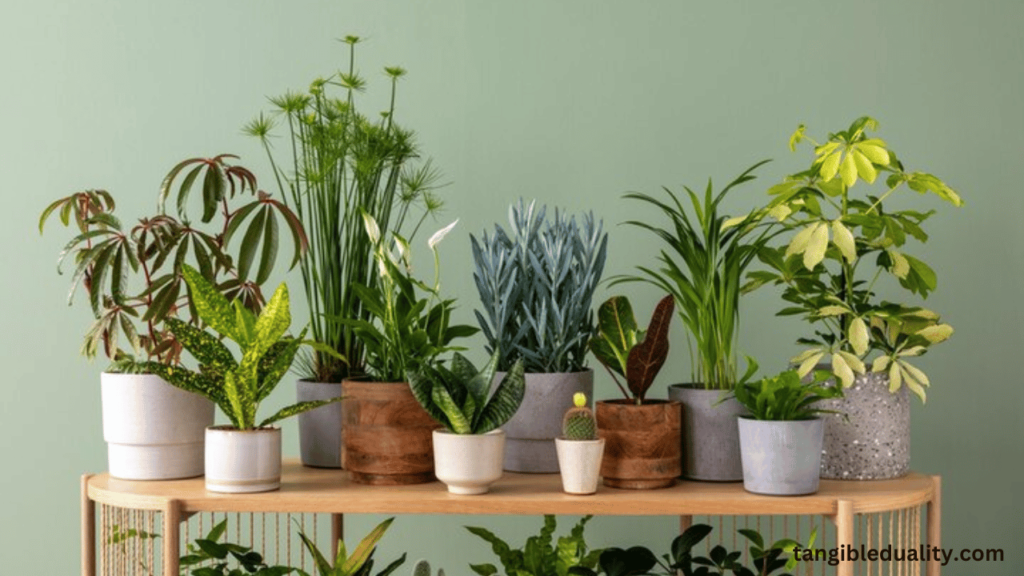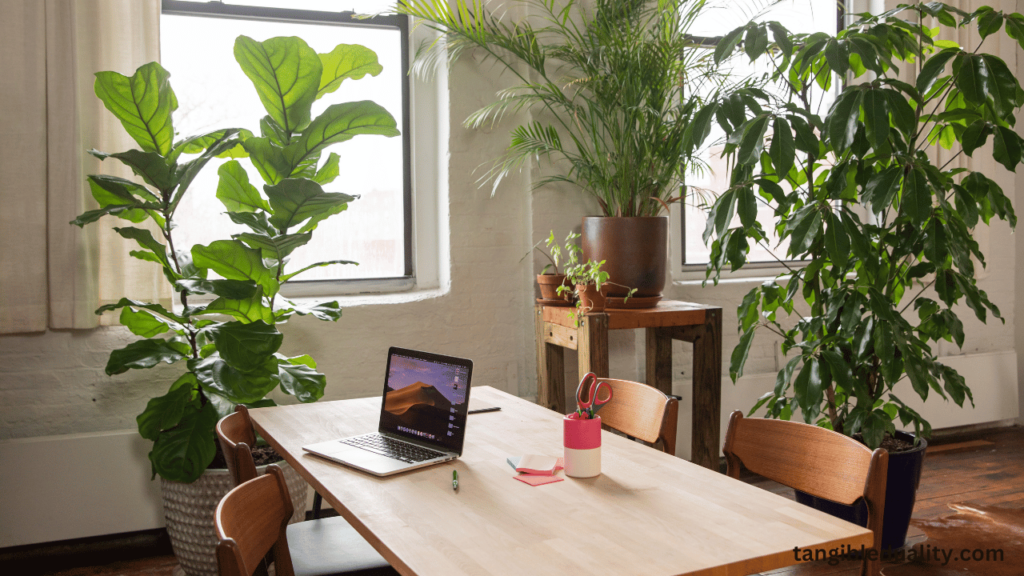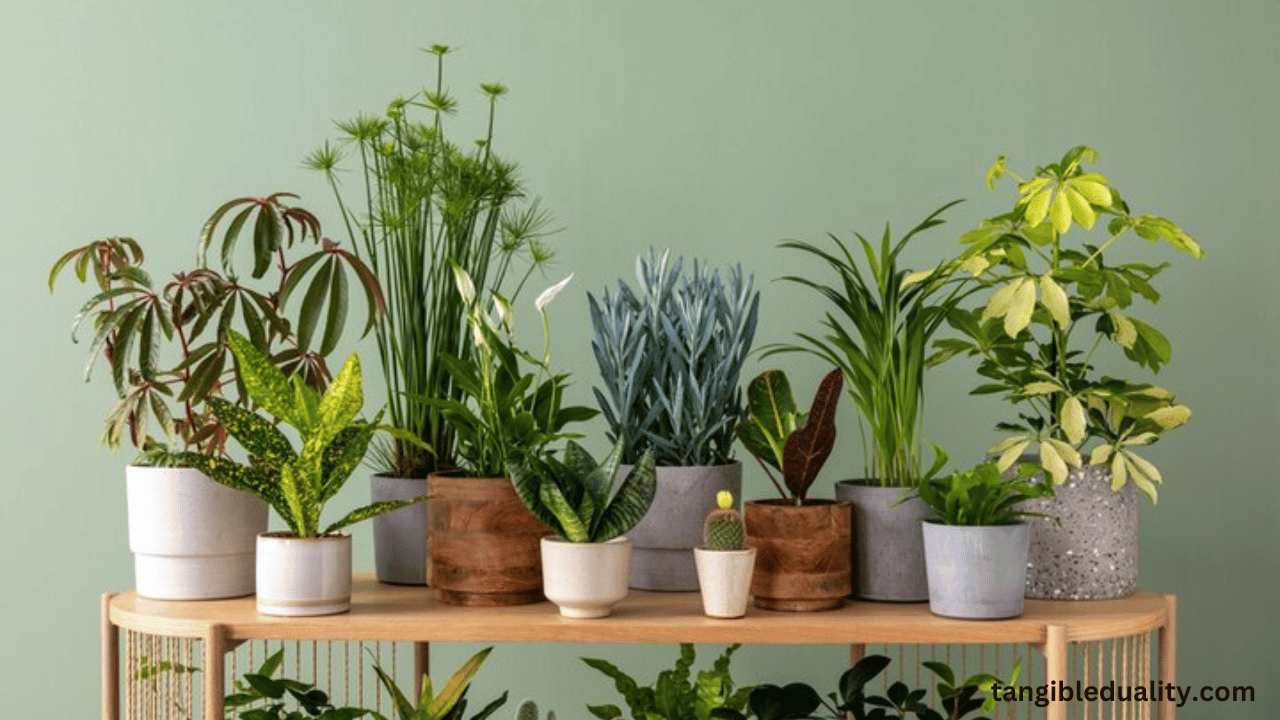We may improve the atmosphere of our living spaces by including indoor plants, which not only have visual appeal but also provide several health benefits. On the other hand, the presence of insects on indoor plants has the potential to transform this safe haven into a battlefield rapidly.
Aphids, mealybugs, spider mites, fungus gnats, and scale insects are examples of pests that not only detract from the aesthetic appeal of our green companions but also put their health and vitality in jeopardy or threaten them.
In spite of the fact that chemical pesticides can appear to be a practical solution, they actually threaten not only our plants and animals but also the environment. Thankfully, nature supplies us with a wide variety of medicines that are both safe and efficient in the fight against pests that are found in indoor plants.
This comprehensive guide delves deeply into the world of natural pest management and provides you with the knowledge and skills necessary to reclaim your indoor garden and cultivate robust plant life without the use of hazardous chemicals.

Understanding Common Indoor Plant Pests
Before embarking on our journey to banish bugs naturally, let’s familiarize ourselves with the adversaries we’re up against:
Aphids
These sap-sucking insects come in various colors and sizes. They cause leaves to curl, distort, and eventually wilt. Their rapid reproduction rate makes them formidable foes for indoor gardeners.
Mealybugs
Recognizable by their cottony appearance, mealybugs feast on plant juices, leaving behind sticky honeydew and unsightly white patches on foliage. Left unchecked, they can quickly overrun a plant.
Spider Mites
Almost invisible to the naked eye, spider mites are notorious for their web-spinning abilities and relentless assault on plant tissues. Their feeding activity results in stippled leaves, fine webbing, and eventual defoliation.
Fungus Gnats
These pesky flying insects lay their eggs in moist soil, giving rise to larvae that feed on organic matter and delicate plant roots. The presence of fungus gnats is often an indicator of overwatering or poor soil drainage.
Scale Insects
Resembling tiny armored shells affixed to plant stems and leaves, scale insects drain sap from their hosts, causing yellowing, wilting, and premature leaf drop. Their protective armor makes them resistant to many conventional treatments.
Now that we’ve acquainted ourselves with our adversaries, let’s explore the natural arsenal we have to use to combat them effectively.

Natural Remedies to Eliminate Bugs on Indoor Plants
Neem Oil: Derived from the seeds of the neem tree (Azadirachta indica), neem oil is renowned for its potent insecticidal and fungicidal properties.
It disrupts the life cycle of pests by interfering with their feeding, mating, and egg-laying activities. Dilute neem oil according to package instructions and apply it as a foliar spray, ensuring thorough coverage of both upper and lower leaf surfaces.
Insecticidal Soap
A simple yet effective solution for soft-bodied pests like aphids, mealybugs, and spider mites, insecticidal soap works by suffocating the insects upon contact.
To make your insecticidal soap, mix mild liquid soap (such as Castile soap) with water in a spray bottle and liberally coat infested plant parts. Repeat the application every few days until pests are eradicated.
Diatomaceous Earth
Consisting of fossilized diatoms, diatomaceous earth is a natural desiccant that effectively dehydrates and kills crawling insects like ants, earwigs, and cockroaches. Sprinkle a thin layer of food-grade diatomaceous earth around the base of your indoor plants and on the soil surface to create a barrier against invading pests. Reapply after watering or rainfall for continuous protection.
Garlic and Pepper Spray
Harnessing the power of pungent ingredients like garlic and hot peppers, a homemade garlic and pepper spray serves as a potent deterrent against a wide range of pests.
To concoct this natural repellent, blend several cloves of garlic and a few hot peppers with water, strain the mixture, and transfer the liquid to a spray bottle. Apply the solution to both the foliage and soil of infested plants, taking care to avoid contact with sensitive plant tissues.
Beneficial Insects
Nature provides us with allies in the fight against indoor plant pests in the form of beneficial insects like ladybugs, lacewings, and predatory mites. These voracious predators feed on aphids, mealybugs, and other soft-bodied pests, helping to keep their populations in check. Consider introducing beneficial insects into your indoor garden as part of an integrated pest management strategy.
Cultural Practices
In addition to deploying natural remedies, implementing proper cultural practices can significantly reduce the risk of pest infestations and promote overall plant health. These practices include:
- Providing adequate air circulation by spacing plants appropriately and using fans if necessary.
- Avoid overwatering and allow the soil to dry out between waterings to deter fungus gnats and root rot.
- Regularly inspect plants for signs of pest activity, such as yellowing leaves, stippling, webbing, and sticky honeydew.
- Quarantining newly acquired plants to prevent the introduction of pests into your indoor garden.
Conclusion
When addressed holistically and environmentally sensitively, it is not only possible to keep an indoor garden free of pests, but it is also enjoyable to see the results of this endeavor.
Creating a flourishing sanctuary of greenery within your house can be accomplished by first gaining an awareness of the behaviors and susceptibilities of common indoor plant pests, and then employing a combination of natural therapies, helpful insects, and cultural practices that are considered to be sound.
Your green thumb will grow as you establish a healthy balance between humans and nature in your indoor garden sanctuary. Embrace the power of nature to protect and nurture your indoor plants, and may you cultivate a green thumb.
FAQs
Q: Can plants communicate with each other?
A: Yes, plants can communicate through various mechanisms such as releasing chemicals into the air or soil, and even through their root systems.
Q: How do plants defend themselves against predators?
A: Plants have evolved various defense mechanisms such as producing toxins, emitting volatile organic compounds to attract predators of their predators, and even using physical barriers like thorns or prickles.
Q: Are there any plants that can survive in extreme environments like deserts or Antarctica?
A: Yes, there are extremophyte plants that have adapted to survive in extreme environments such as deserts, icy tundras, or volcanic regions. These plants have specialized features to withstand harsh conditions.
Q: Can plants get sunburned?
A: While plants don’t get sunburned in the same way humans do, they can experience damage from excessive sunlight, leading to wilting, sunscald, or even death in extreme cases.
Q: Do plants sleep?
A: Plants don’t sleep in the same way animals do, but they do have daily rhythms of activity and rest, influenced by factors like light and temperature changes.
Q: How do plants know which way is up and which way is down?
A: Plants have specialized cells and structures called statocytes that can sense gravity. These cells help the plant determine the direction of gravity, allowing roots to grow downward and stems to grow upward.

